 The Nuit des Musées is a chance to go museum hopping in Paris for free (until midnight May 21). The aim of the event, organized by the French Ministry of Culture, is to encourage people to get out and see some art. No excuses! In addition to art exhibitions the evening includes workshops, concerts, installations and performances.
The Nuit des Musées is a chance to go museum hopping in Paris for free (until midnight May 21). The aim of the event, organized by the French Ministry of Culture, is to encourage people to get out and see some art. No excuses! In addition to art exhibitions the evening includes workshops, concerts, installations and performances.
Most of the city’s museums will be participating including the Louvre, Musée d’Orsay, Centre Pompidou, Arts and Metiers Museum, Palais de la Découverte and Decorative Arts Museum. For the biggies be prepared to stand in long lines. The “Nuit” takes place in thirty cities around Europe. Last year, over 1300 museums in France participated in the European Museum Night, and over 2 million people attended throughout Europe.
In addition to Nuit des Musées future fests organized by Paris include the Fête de la Musique celebrating the start of summer (June 21st) , Heritage Days in September, Paris Summer Quarter Fest, which starts July 14th and Bastille Day’s Night street dances July 13-14.
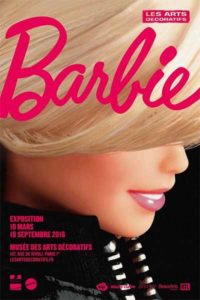 For the first time ever, a major French art museum has dedicated it’s space to one of the most famous American icons of our times….Barbie!
For the first time ever, a major French art museum has dedicated it’s space to one of the most famous American icons of our times….Barbie!

 The Fondation Henri Cartier Breson revisits the photographer Francesca Woodman with a thematic overview exhibition of her work titled “on Being an Angel.” (until July 31, 2016). Woodman (1958-1981) is known for her enigmatic stage-managed blurred black and white photos featuring either herself or female models often nude. Her intimate autobiographical approach to the medium has inspired a generation of young photographers.
The Fondation Henri Cartier Breson revisits the photographer Francesca Woodman with a thematic overview exhibition of her work titled “on Being an Angel.” (until July 31, 2016). Woodman (1958-1981) is known for her enigmatic stage-managed blurred black and white photos featuring either herself or female models often nude. Her intimate autobiographical approach to the medium has inspired a generation of young photographers. 
 The Nuit des Musées is a chance to go museum hopping in Paris for free (until midnight May 21). The aim of the event, organized by the French Ministry of Culture, is to encourage people to get out and see some art. No excuses! In addition to art exhibitions the evening includes workshops, concerts, installations and performances.
The Nuit des Musées is a chance to go museum hopping in Paris for free (until midnight May 21). The aim of the event, organized by the French Ministry of Culture, is to encourage people to get out and see some art. No excuses! In addition to art exhibitions the evening includes workshops, concerts, installations and performances. ‟Fashion Forward, 3 Centuries of Fashion (1715-2016)” at the Musée des Arts Décoratifs brings together 300 items of men’s, women’s and children’s fashion from the 18th century to today, selected from the museum’s collections to provide a chronological overview (to August 14, 2016).
‟Fashion Forward, 3 Centuries of Fashion (1715-2016)” at the Musée des Arts Décoratifs brings together 300 items of men’s, women’s and children’s fashion from the 18th century to today, selected from the museum’s collections to provide a chronological overview (to August 14, 2016).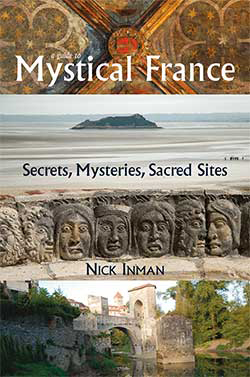 “A Guide to Mystical France, ” is a magical mystery tour of the sacred sites of France from prehistoric cave paintings to majestic Gothic cathedrals to the secrets of the Knights Templar. This well-researched thoughtful book, written by British-born writer-photographer Nick Inman (who now lives in southwest France) is for people who have probably already seen the Mona Lisa and Eiffel Tower and want to have a deeper, more meaningful experience of France.
“A Guide to Mystical France, ” is a magical mystery tour of the sacred sites of France from prehistoric cave paintings to majestic Gothic cathedrals to the secrets of the Knights Templar. This well-researched thoughtful book, written by British-born writer-photographer Nick Inman (who now lives in southwest France) is for people who have probably already seen the Mona Lisa and Eiffel Tower and want to have a deeper, more meaningful experience of France. 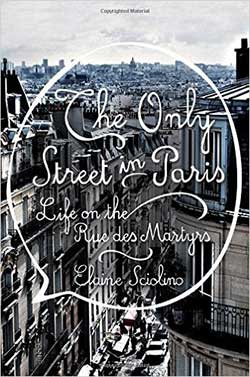 Discovering Paris’ streets and neighborhoods is one of the pleasures of living here. A new book by veteran expat Elaine Sciolino is a delightful and beguiling look at life on a Rue de Martyrs, located in Paris’ charming 9th arrondissement.
Discovering Paris’ streets and neighborhoods is one of the pleasures of living here. A new book by veteran expat Elaine Sciolino is a delightful and beguiling look at life on a Rue de Martyrs, located in Paris’ charming 9th arrondissement.  Many guides tout themselves as “insiders” but this one with the best addresses in Paris is the real thing. “Paris C’est Chic” is produced by the “Do It In Paris” website team and published as a printed guide by Parigramme, which specializes in all things Parisian. Organized by neighborhoods with a focus on femme fashion, shopping, fooding and cool cafés, this is guide useful for Parisians themselves.
Many guides tout themselves as “insiders” but this one with the best addresses in Paris is the real thing. “Paris C’est Chic” is produced by the “Do It In Paris” website team and published as a printed guide by Parigramme, which specializes in all things Parisian. Organized by neighborhoods with a focus on femme fashion, shopping, fooding and cool cafés, this is guide useful for Parisians themselves. 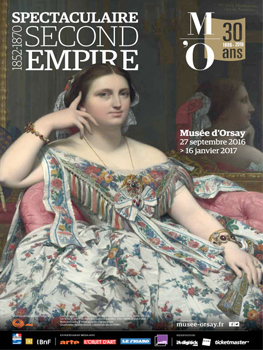 A major exhibition—”Spectaculaire Second Empire, 1852-1870″— at the Musee d’Orsay celebrates the museum’s 30th anniversary (to January 15, 2017). It revisits a time when France was at its zenith with paintings, sculptures, photographs, architectural drawings, objets d’art and jewels depicting a brilliant era rich in contradictions.
A major exhibition—”Spectaculaire Second Empire, 1852-1870″— at the Musee d’Orsay celebrates the museum’s 30th anniversary (to January 15, 2017). It revisits a time when France was at its zenith with paintings, sculptures, photographs, architectural drawings, objets d’art and jewels depicting a brilliant era rich in contradictions.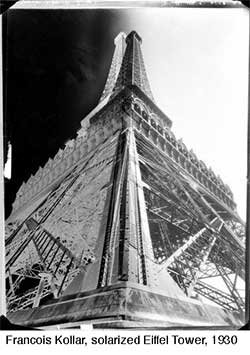 The Jeu de Paume hosts a retrospective of Francois Kollar’s photographs (to May 22). Although little known outside the photo cognoscenti Kollar was among the most innovative and experimental of France’s commercial photographers during the 30’s and 40’s. Considered a French photographer Kollar— like many other important photographers such as Robert Capa and Brassai who made their careers in France —came here from Eastern Europe. Kollar moved to Paris from Hungary in 1924. He lived and worked the rest of his life in France until his death in 1979.
The Jeu de Paume hosts a retrospective of Francois Kollar’s photographs (to May 22). Although little known outside the photo cognoscenti Kollar was among the most innovative and experimental of France’s commercial photographers during the 30’s and 40’s. Considered a French photographer Kollar— like many other important photographers such as Robert Capa and Brassai who made their careers in France —came here from Eastern Europe. Kollar moved to Paris from Hungary in 1924. He lived and worked the rest of his life in France until his death in 1979.  Originating in the suburbs of Paris in the 1930s, this distinctively energetic style of jazz was created by the legendary Django Reinhardt, who played with fellow gypsy musicians in Parisian jazz haunts during the 1930s and 1940s. Reinhardt grew up in a caravan in the Parisian suburbs and famously lost the use of two of his left-hand fingers in a fire. Despite doctors saying he would never play guitar again, the paralysis of his two fingers instead led to his invention of Gypsy Jazz (or Jazz Manouche as it’s known in France), a new jazz style incorporating three-finger chord structures and smooth, rippling melodies. It was then handed down through the generations of Manouche gypsies via oral methods, as most of whom, Django included, could not read music.
Originating in the suburbs of Paris in the 1930s, this distinctively energetic style of jazz was created by the legendary Django Reinhardt, who played with fellow gypsy musicians in Parisian jazz haunts during the 1930s and 1940s. Reinhardt grew up in a caravan in the Parisian suburbs and famously lost the use of two of his left-hand fingers in a fire. Despite doctors saying he would never play guitar again, the paralysis of his two fingers instead led to his invention of Gypsy Jazz (or Jazz Manouche as it’s known in France), a new jazz style incorporating three-finger chord structures and smooth, rippling melodies. It was then handed down through the generations of Manouche gypsies via oral methods, as most of whom, Django included, could not read music.